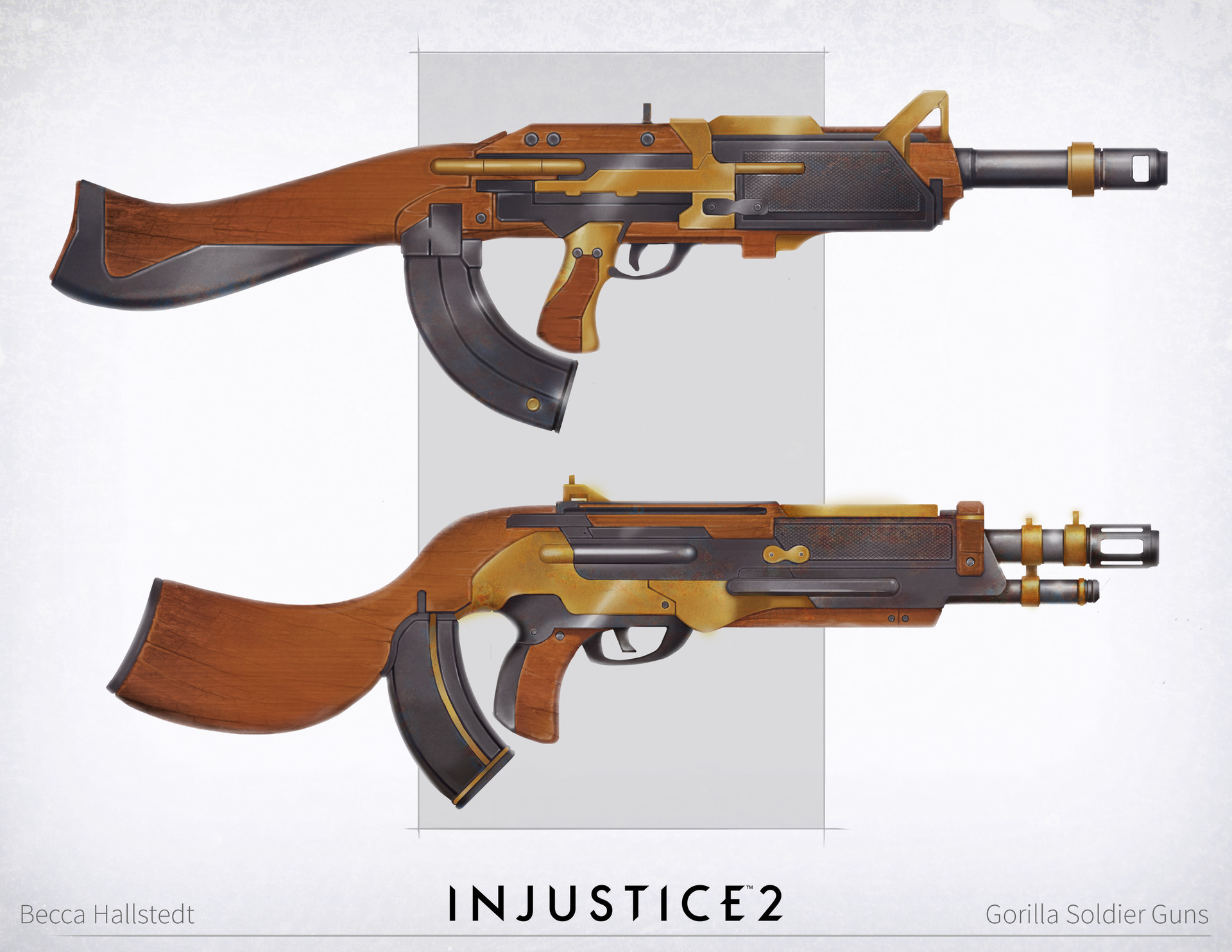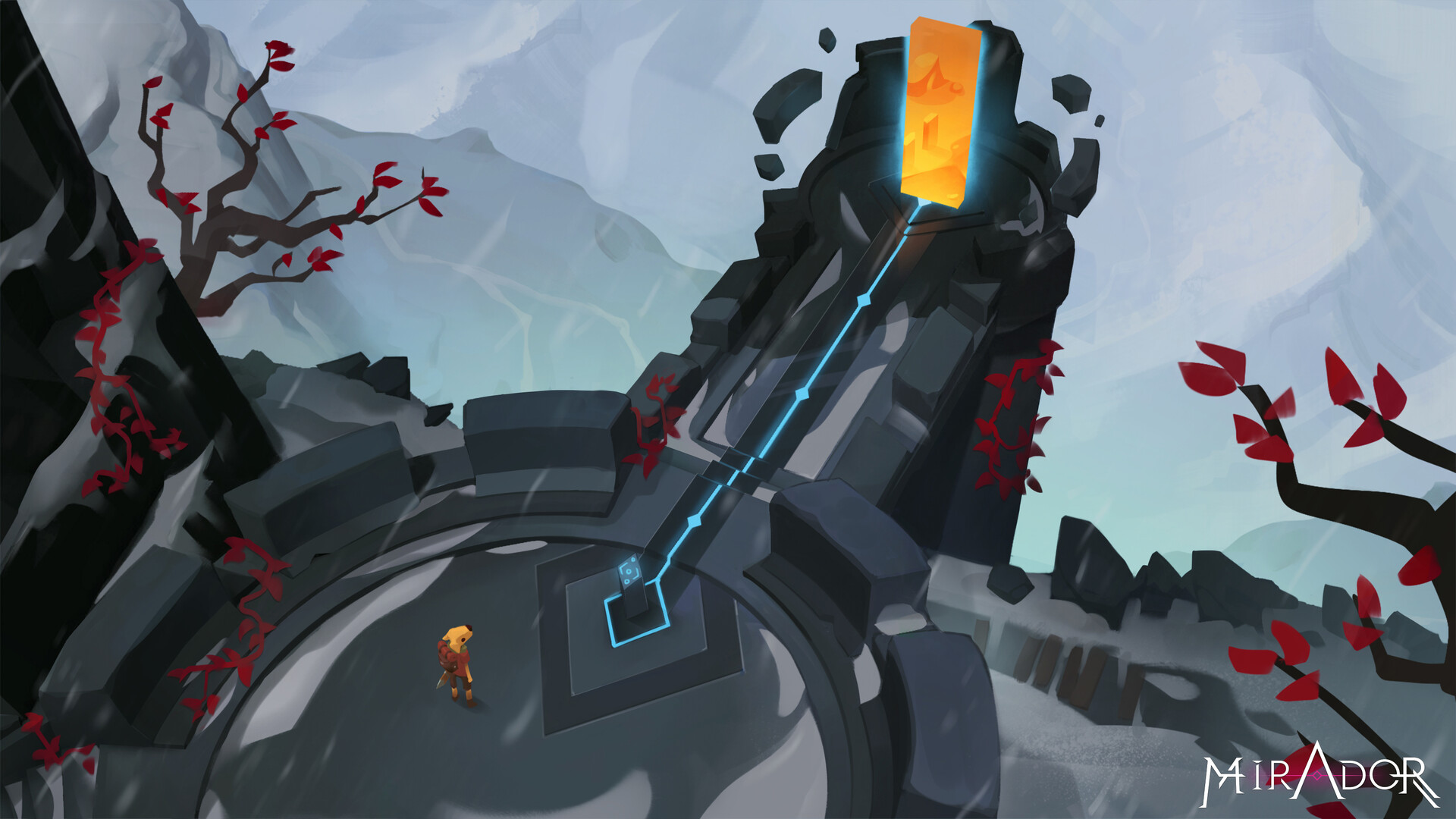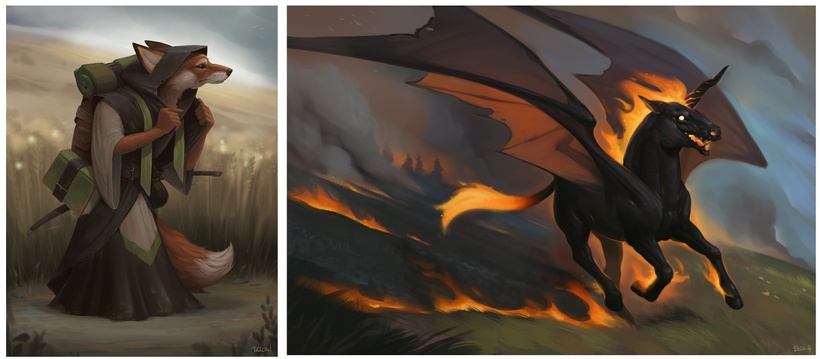Creating a Great 2D Art Portfolio for Games (Patreon)
Content
Building a portfolio can feel like a messy, confusing process. What types of art can make your body of work feel more practical? How can your work be more marketable? How can you stand out from the huge crowd?
2D artist roles in games are incredibly competitive, and the bottom 30% of jobs in our industry tend to be heavily oversaturated. That said, a lot of young artists make similar mistakes, and their portfolio can be improved relatively quickly once they have some constructive guidance and clear goals. This is a list of ideas for pragmatic content that you can add to your body of work.
I wanted to share some of the art I've made over the years that got the attention of recruiters and/or literally got me a job. Many of the pieces below are small-scope projects that can be quickly created in a few days and added to your portfolio. They were made with the production pipeline in mind to bolster my body of work to be more practical, while still having fun!
Most of these images are at least a few years old (hashtag NDAlife TM) but I think they work fine as examples.
Textures
Handpainted textures are becoming less relevant at many AAA studios as pipelines are shifting over to PBR materials, but they continue to be used at indie and mobile studios. Demonstrating your understanding of color and value with some tiling textures can be a great way to integrate some 2D game assets into your body of work.

If you're going to add some textures, then I do recommend picking up some 3D art skills. Even if you don't end up doing 3D at work, it shows that you understand how to navigate UVs and apply your texture to a model.
You can of course also pick up some Substance Designer + Painter and get familiar with putting materials together. Some studios have roles just for material artists, and Substance is still pretty new and very relevant in the modern production pipeline!
Icons
![]()
If you ask me, every aspiring 2D artist- especially those that want to be generalists- should have some icons. These small-scope, diverse, fun little challenges can turn an impractical body of work into a functional, grounded portfolio very quickly. There are a ton of different styles you can work in, and there is a wide range of subject matter that can be explored.
Icons can portray:
- Weapons/usable items
- Potions/food/consumables
- Spells
- Actions
- Passive/active abilities
- Logos
- Creatures/characters
And more! Almost every video game that has ever been made has required some icons.

The most important things to keep in mind:
1. Think about the actual size that the icons will appear in-game. Most icons are scaled WAY down in games and need to be read at a glance. The squint test is especially important when painting these!
I like to have two windows of my PSD open when I'm working. One is zoomed in so I can paint very cleanly, but the other is SUPER small and zoomed out so I don't get lost in the details.

Because of this, you often don't need a TON of tiny details, or else the icon will get noisy and hard to read. This is why...
2. Values are SUPER important in icons. ALWAYS check the icon in grayscale before calling it done. If everything is a midtone, then it will be very hard to read. I recommend utilizing the Proof Setup method (not only in icons, but in ALL art you make) which can be checked out in this video.
Weapon/Prop Designs

For every character in a game, there are a dozen props that need to be designed. A lot of aspiring artists will build a portfolio of just character designs without demonstrating that they are considering everything else that needs some visual guidance.
When I got my first job in games, half of my portfolio was prop designs! These are an opportunity to practice a wide variety of beneficial skills, such as material rendering, orthographic drawing, storytelling, style flexibility, and shape language.


Designing props in a variety of styles got me my first concept art-specific job! When concepts are generated in-house at a lot of AAA studios, they're often sent to outsourcers to block in or entirely execute the 3D model.
That means it's very important to draw props with clear, readable forms. A 3D modeler should be able to execute your idea without having to ask you any questions. Avoid brushiness that is hard to interpret into a 3d model, and make sure that every aspect of the design is easy to understand.
Being able to do this isn't just valuable, it's rare. By having strong fundamental drawing skills and a practiced design sense, you can stand out from a significant amount of other applicants.

Paintovers

Y'all, I have had months at a time during which the majority of my tasks were paintovers. I cannot overemphasize the degree of pragmatism that these can inject into a portfolio.
Paintovers are used on environments, props, characters, VFX... the whole dang deal. The idea is pretty simple- to take a flat image of an incomplete or faulty asset/scene/concept, and paint on top of it in order to communicate materials, details, how to improve, etc.

I often lean on 3D for my illustrations to set up perspective or lighting, which utilizes the same skills that are needed for material or detail paintover passes. Do not be afraid of using 3D in your work! It's a tool, not a shortcut. Painting over 3D scenes can be very challenging, so I recommend starting small like with the shrine above, and then pushing your skills to a point at which you can lean on 3D software to set up the structure of illustrations like the one below!

Card Art/TTRPG/Cover Illustrations

Card, RPG, and cover art are essential portfolio pieces for aspiring illustrators. You can also consider creating pieces for board games, like board art, characters, and graphics.
This doesn't just apply to card/physical games art, but if you want to create art along a theme, then I highly recommend coming up with an imaginary game/project/tv show/whatever and creating art for it as though it exists! Think about all of the different aspects that would require visual design, and try to make it all as cohesive and elegant as possible.
Worldbuilding/Visual Development
General worldbuilding is another great context to come up with an imaginary game or project, then create a variety of designs for it. Sketching environmental assets, experimenting with shape language, and practicing rapid iteration are all great ways to add some bulk to your body of work.
~~
The most important lesson of this article is (regardless of what you add to your portfolio) to be practical. With each piece you make, ask yourself:
- How would this be used in a studio setting?
- Is the quality of this piece at or close to a professional level?
- What type of studio does this market to?
Stay pragmatic and thoughtful when building your body of work. Add to it intentionally, keep seeking feedback, and keep the production pipeline in mind. Good luck!


